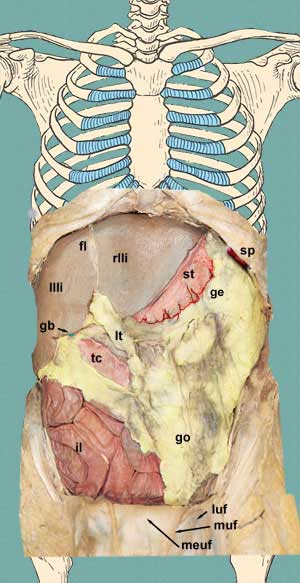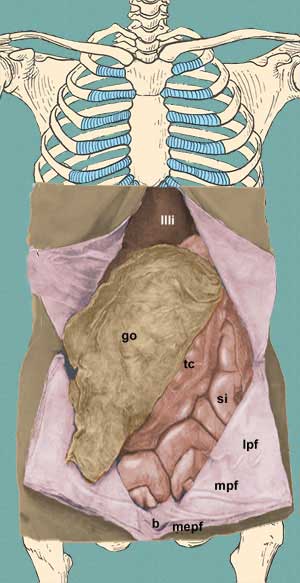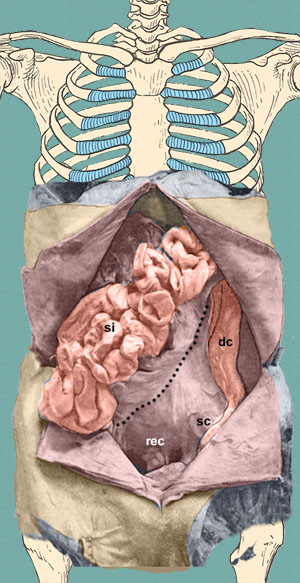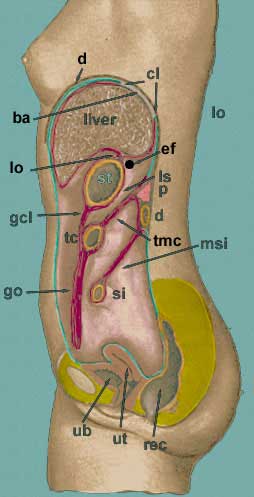At this point, you might want to take a tour of the abdominal cavity by
following the peritoneum around and identifying structures as you go. Take
a look at this page
and follow the instructions. It would be nice if this could be done at the
cadaver, but not everyone has that opportunity so you have to imagine what
is going on.
Summary of Ligaments attached to the Umbilicus
The
falciform ligament is a double
fold of peritoneum which extends from the umbilicus to the antero-superior
surface of the liver. In its free edge, you will see that it contains a cord-like
structure which passes to the inferior border of the liver. This is the
round ligament of the liver, which is formed by the
remains of the left umbilical vein of the fetus. Running adjacent to the
ligament are small veins the connect the paraumbilical veins around the umbilicus
to the portal vein.
On the deep surface of the lower abdominal wall, note that there
are three cord-like structures seen through the peritoneum and extending upwards
towards the umbilicus. These are the
median umbilical
ligament (or median umbilical fold), and the
lateral
umbilical ligaments (or medial umbilical folds). The median umbilical
ligament extends from the tip of the bladder to the umbilicus and is the
remains of the fetal urachus. The lateral umbilical ligaments arise from
the pelvis as a continuation of the internal iliac artery and extend to the
umbilicus. These are the obliterated parts of the fetal umbilical arteries
that carried blood from the fetus back to the placenta of the mother.
Here is a summary of the all of the various names used to describe different
parts of the peritoneal reflections:





